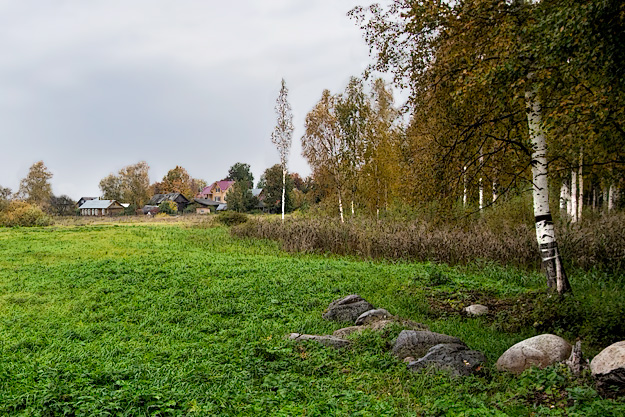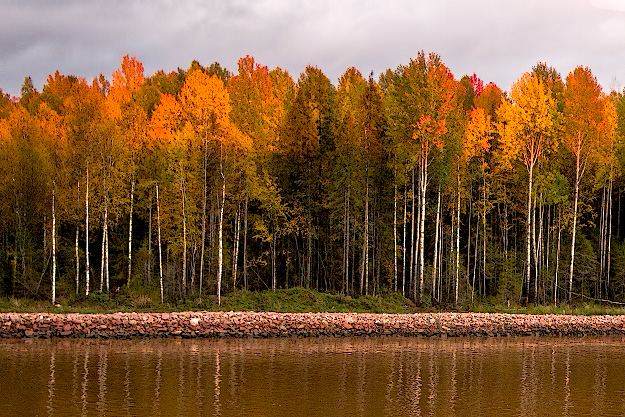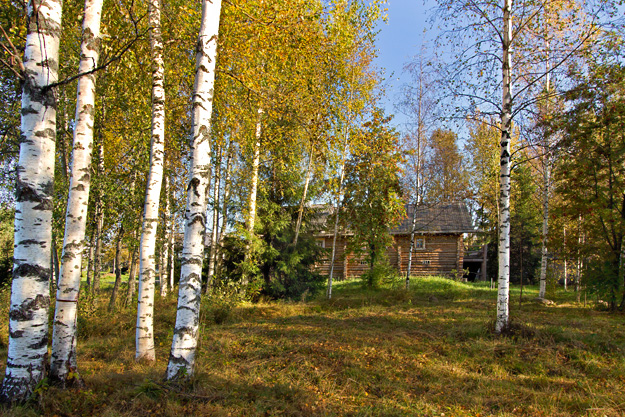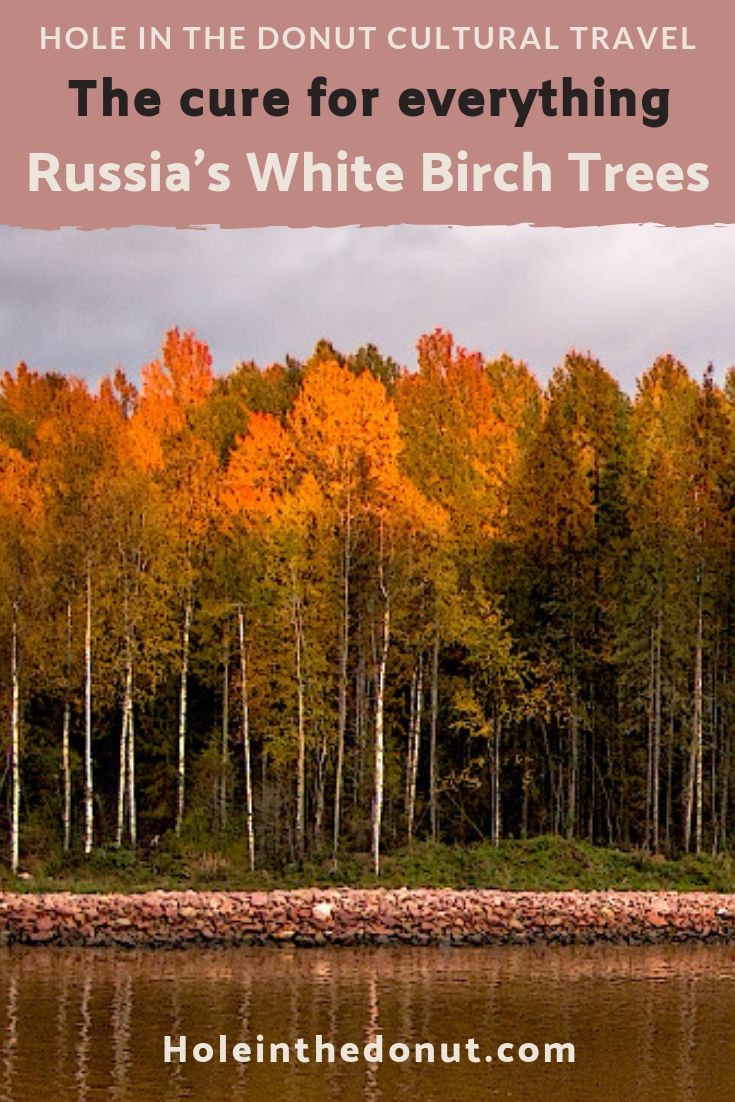Freezing rain splashed off the massive stone walls of Belozersky Monastery, pelted my face, and trickled down my neck. I pulled my hood closer and surveyed the leaden surroundings. On my left, the monastery loomed dense and gray, threatening to tip the earth. Ahead of me lay a gray corpse of a lake. The only relief from the monotonous landscape was a stand of birch trees to my right, rising white and stately from a luxurious patch of grass.
“Beautiful, are they not?” remarked my tour guide. “Every spring and summer, we tap the trees for their sap, which is used to make a drink that has curative properties. Some of the sap is even frozen, so we have a supply throughout the winter.”

I had seen dense stands of white Birch trees earlier on my voyage down the Volga-Baltic waterway between Moscow and St. Petersburg. At one point I braved teeth-chattering temperatures to capture photos of flame tipped birches in the setting autumn sun. But as I would discover, to Russians, birches are more than just a pretty picture.
For centuries the birch tar has been used as a remedy against hundreds of diseases in Russia. Its essential oil is used for deworming and as a diuretic. Preparations made from the inner bark are said to cure malaria, gout, lung conditions, skin diseases, and heal wounds and fungal infections. Folk remedies made from the buds are used against kidney and liver disorders, rheumatism, tuberculosis, bronchitis, and skin conditions. The American Cancer Society even reports that Betulinic acid, made from betulin extracted from white birch bark, is currently being studied for its efficacy against cancer, tumors, melanoma, and certain brain cancers.

In Russia, uses for the birch go well beyond medicinal. In some rural areas, the bark is carefully stripped off in small quantities that does no harm to the trees and used for shoes. Birch wood has traditionally been used for building construction and for the production of decorative items, as it is easily worked and polished. Karelian, a variety of birch that grows only in northwest Russia, develops huge tumor-like protrusions known as burrs. The burr wood, dense and rippled with layers of dark and light wood that resemble marble, is highly prized for furniture making. Birch wood is also used for smoking some foods, in spirit and vodka purification, and for painting, while the leaves are used to color wool, silk and cotton.
Of all the purposes for birch, its use in cultural and spiritual ceremonies may be the most important. In the open-air museum on Kizhi Island, our guide pointed out a Russian banya, or sauna, where a birch log fire heats stones during the long, bitter Russian winters. Cold water is poured over the hot stones to produce steam, while bathers slap their bodies with birch twigs to relax the muscles and stimulate circulation. To Russians, the banya is an essential component of winter life.

Even more deeply ingrained into Russian culture is the idea of the birch as a protective spirit. Ancestral Russians believed that the tree could ward off the evil eye, thus infants were often swaddled in birch cradles. Before Christianity became the religion of Russia, people even believed their souls migrated into birch trees at death. Still today, its branches are used as decoration for churches and homes during Pentecost.
The more I learned, the more fascinated I became. I scoured the kiosks and shops around Russia in search of birch sap but there was none to be found. Since I visited in September, timing was likely the problem. Tapping season only lasts for a few weeks, from April 10-12 to early May, and with fewer and fewer people collecting the sap, demand exceeds supply. Authorities are considering creating a regional center for the harvesting, processing, and selling of wild products. The stimulation of birch sap production and development of more products, such as birch syrup for pancakes and waffles, is one of the main goals of this program.
Just when I thought I knew everything about the uses for Russia’s birch trees, our ship docked at Mandrogy, a recreated museum island where shops focused on traditional arts and crafts. I wandered into the first shop and a woman behind the counter handed me a small metal tool with a curved edge, peeled the papery white surface off a piece of birch bark, and demonstrated how to make a daisy shape. She held my lopsided flower over a tray of hand-crafted birch jewelry, indicating it was destined for a pair of earrings, but I’m sure she discarded my crude attempt the moment I left.
I suspect that I may not yet know all the uses for and beliefs surrounding white birch trees, but it’s clear that they provide for the needs of Russians from head to toe, inside and outside, secular to spiritual. It is hardly surprising that it’s the national tree of Russia.
Note: I was a guest of Viking River Cruises during my Waterway of the Tsars cruise. However, the receipt and acceptance of complimentary items or services will never influence the content, topics, or posts in this blog. I write the truth, the whole truth, and nothing but the truth.


i love russan
Interesting to read the ethnobotanical features of these trees. I have to admit to being a little jealous of those that have them. We are pretty much treeless here, and I often miss them.
Don’t think I could live somewhere where there was no trees!
The wisdom of the elders is often ignored in this day and age … thanks for shedding light on some of this info in another country!
I worry that this knowledge will eventually be completely lost, Katie. People don’t realize that aspirin came from the bark of the willow tree. These days everything is synthesized, but there is no better cure than mother nature.